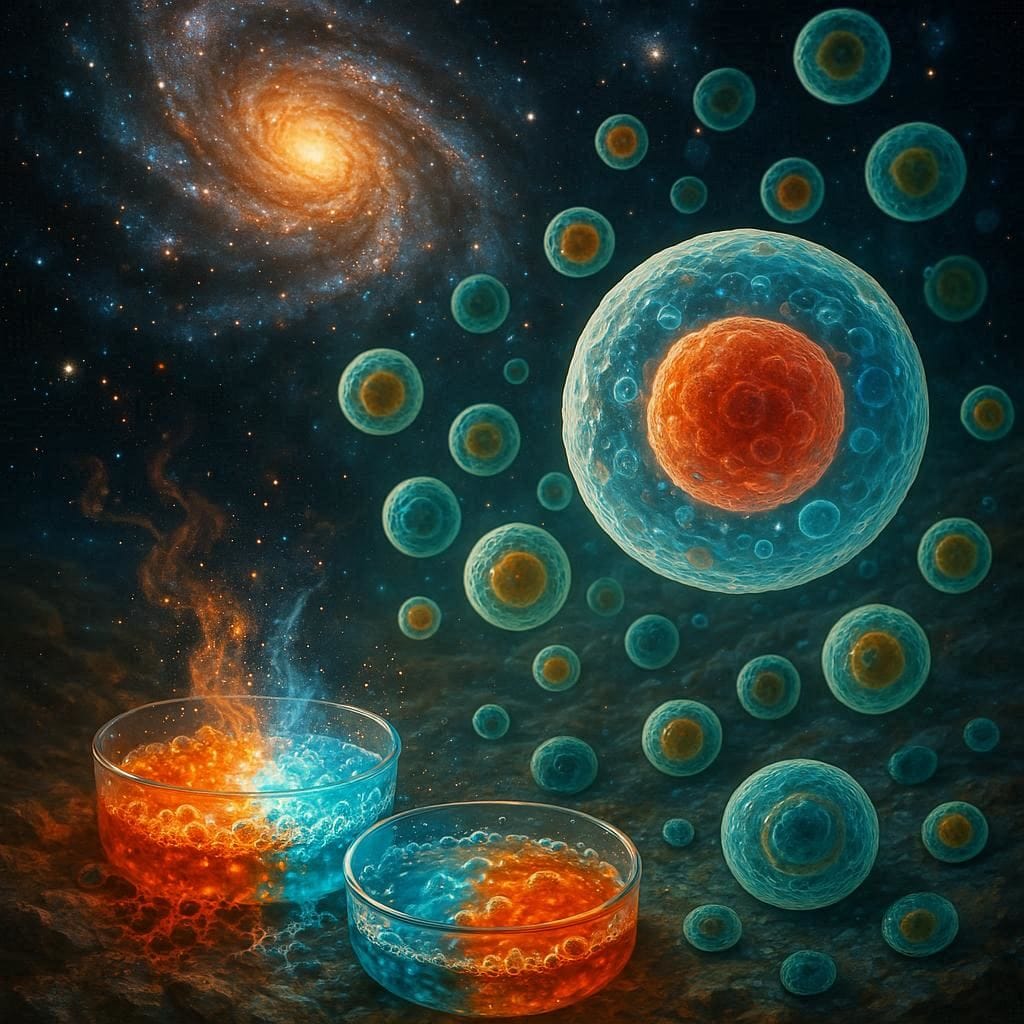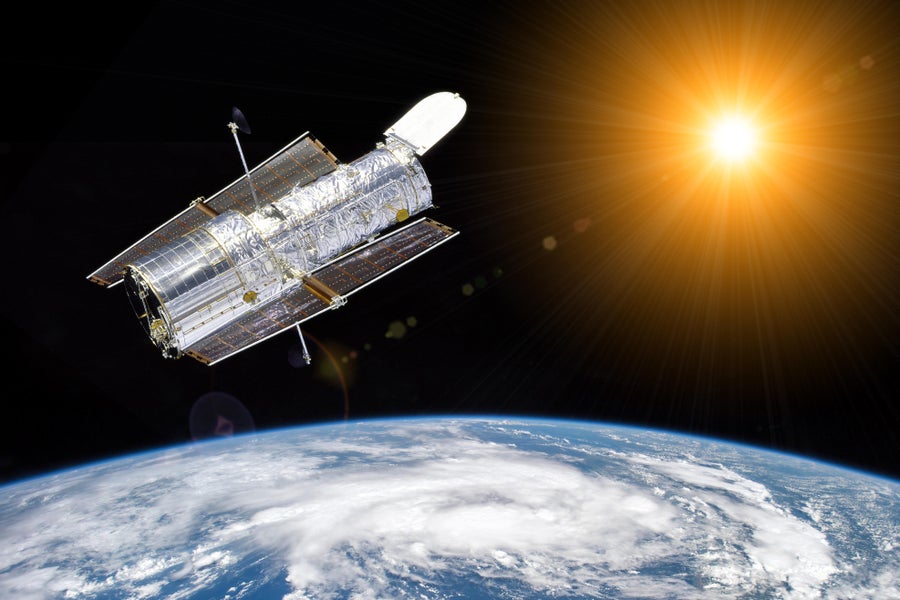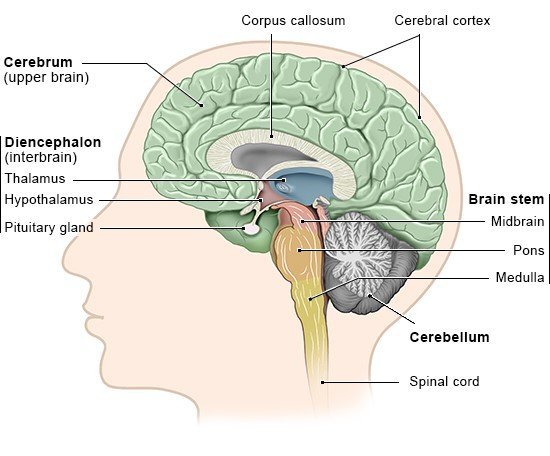Since the dawn of human thought, men and women have looked up at the night sky or down into the soil beneath their feet and asked a question that pierces the heart of existence: How did life begin? The question is not only scientific but deeply personal. Every heartbeat, every breath, every thought, depends on processes that began billions of years ago when lifeless matter somehow stirred, when chemistry crossed a threshold into biology.
This mystery—the origin of life—is not a puzzle solved by a single fact or formula. It is a story written across time, hidden in the rocks of ancient Earth, whispered in the code of DNA, and reflected in the very cells that keep us alive. To seek its answer is to seek our own beginnings. What transformed a young, barren planet into a world teeming with forests, oceans, animals, and minds capable of wonder? Somewhere in the delicate dance of molecules, life found its first spark.
A Planet Ready for Life
The story begins more than four billion years ago. Earth was young then, still cooling from its violent birth. Asteroids and comets bombarded its surface, oceans boiled under a dense, chaotic atmosphere, and volcanoes spewed gases into the air. To us it seems hostile, but to chemistry it was a canvas.
The early atmosphere was likely rich in carbon dioxide, nitrogen, methane, ammonia, hydrogen, and water vapor. These simple molecules were the building blocks waiting for arrangement. Energy was abundant—lightning flashed across stormy skies, ultraviolet radiation poured from the Sun, and deep-sea hydrothermal vents released heat and minerals into the oceans. On this raw and restless Earth, conditions were ripe for transformation.
The oceans, vast and primitive, were not yet blue but murky with dissolved minerals. Geologists call them a “primordial soup,” a chemical broth in which the first organic molecules could assemble. Here, somewhere in these waters or along rocky shores, lifeless atoms began to find form, and chemistry began its long road toward biology.
The Spark of Chemistry
The first great leap toward life was the creation of organic molecules—compounds based on carbon that form the skeleton of living things. Carbon is unique among the elements: it can form four stable bonds, allowing it to create long chains, rings, and complex structures. To this day, every cell in every organism relies on the versatility of carbon chemistry.
In 1953, the mystery was illuminated by a groundbreaking experiment. Stanley Miller, a young graduate student, working with his advisor Harold Urey, recreated the conditions thought to resemble early Earth. In a closed apparatus, they placed water, methane, ammonia, and hydrogen, then sparked it with electric discharges to simulate lightning. After just a week, the mixture turned a murky brown. Analysis revealed that several amino acids—the building blocks of proteins—had formed.
This experiment showed that life’s ingredients could indeed arise spontaneously from nonliving chemistry. It was not proof of life’s origin, but it was a profound demonstration: given energy and raw materials, nature can create complexity. Molecules once thought to require living cells could emerge in the absence of life itself.
Subsequent research expanded this picture. Scientists found that nucleotides, the components of RNA and DNA, can also form under certain conditions. Sugars and lipids can assemble from simple gases. Meteorites that fall to Earth carry organic compounds forged in the cold depths of space, suggesting that the ingredients of life are not unique to our planet but scattered throughout the cosmos. Chemistry, it seems, has a bias toward complexity, an urge to build.
From Molecules to Macromolecules
Yet amino acids and nucleotides alone do not make life. Life requires order, not just abundance. Proteins, the workhorses of the cell, are long chains of amino acids precisely arranged. DNA, the hereditary molecule, is a vast library of information stored in a four-letter code. How could such organized polymers emerge from the chaos of early Earth?
One possibility lies in cycles of concentration and drying. On tidal flats or near volcanic pools, water could evaporate, forcing molecules into close contact, encouraging them to link into chains. Clay minerals may have acted as scaffolds, catalyzing the formation of polymers by aligning smaller molecules on their surfaces.
Over countless cycles, random chains formed—most meaningless, some unstable, but a few possessing properties that made them persist. Perhaps one chain folded into a stable structure, able to catalyze a reaction that made more of itself possible. Perhaps another could bind to a surface, securing it from being washed away. In a world of chance, persistence is power. From this lottery of molecules, the first whispers of function began to emerge.
The RNA World
Among the many hypotheses about life’s beginning, one stands with particular elegance: the RNA World. RNA, or ribonucleic acid, is a molecule similar to DNA but more versatile. It can store information, like DNA, but it can also fold into shapes that allow it to act as a catalyst, like proteins.
Today, in every living cell, RNA plays a central role. It carries messages from DNA, helps assemble proteins, and even acts as a catalyst in certain reactions. This dual ability—to store information and to perform chemistry—suggests RNA could have been life’s first master molecule.
Imagine a world in which RNA molecules formed spontaneously in pools of early Earth. Some were unstable, but others folded into structures that helped them copy themselves. Though imperfect, copying allowed variation. Some variants were better at surviving in harsh conditions, better at replicating, or better at using available resources. In this primitive competition, evolution had begun—natural selection operating not on organisms but on molecules.
The RNA World hypothesis does not answer every question—how exactly RNA first arose, how long it dominated before DNA and proteins took over—but it offers a bridge between lifeless chemistry and the first true biology. RNA may have been the spark that carried chemistry across the threshold into self-sustaining life.
Encasing Life: The First Membranes
Life is not only molecules but organization. Cells are the basic units of life, and every cell is encased in a membrane. Without boundaries, molecules drift apart, energy dissipates, and reactions lose focus. A container allows concentration, protection, and identity. The rise of membranes was therefore another essential step in life’s origin.
Fatty acids, simple molecules with a hydrophilic head and hydrophobic tail, spontaneously form structures in water. They arrange into micelles or bilayers, creating small vesicles that resemble cell membranes. In laboratory experiments, such vesicles have been shown to grow, divide, and even encapsulate RNA or other molecules.
Imagine tiny droplets forming in the primordial oceans, each one a bubble of possibility. Some trapped RNA or amino acids inside, protecting them from the outside world. Others grew larger by incorporating more fatty acids from their environment. Over time, vesicles that held beneficial molecules persisted longer, hinting at the first protocells—simple containers where chemistry could flourish and evolve.
The union of RNA-like replicators with primitive membranes may have created the earliest true cells, entities capable of both replication and metabolism. These protocells were fragile, but they were the ancestors of all life, humble origins for the vast diversity we see today.
The Dawn of Metabolism
Replication and information are vital, but life also needs energy. To persist, protocells required ways to harness the chaotic flow of energy in their environment. Early metabolism may have begun with simple chemical reactions at mineral surfaces, where gradients of energy existed naturally.
Deep-sea hydrothermal vents provide one of the most compelling scenarios. At these vents, minerals like iron sulfide create natural compartments where hydrogen and carbon dioxide can react, producing organic molecules. The steep gradients of temperature and chemistry across vent walls could have powered primitive reactions, giving protocells a foothold in energy capture.
Later, as protocells grew more sophisticated, they may have developed pathways resembling fermentation, photosynthesis, and respiration. Each innovation allowed them to draw more energy from their environment, fueling growth and complexity. The spark of life, once fragile, began to stabilize, rooted in the flow of energy that sustains all organisms to this day.
From Protocells to the First True Cells
The path from protocells to fully fledged cells spanned millions of years. Along the way, molecules and structures co-evolved, reinforcing one another. RNA gave rise to proteins, which were more efficient catalysts. DNA emerged as a more stable repository of information, gradually taking over from RNA as the genetic molecule. Lipid membranes became more complex, incorporating proteins that controlled transport and communication.
The first true cells were prokaryotes—microbes without nuclei, resembling modern bacteria and archaea. These cells mastered survival in harsh conditions, from boiling hot springs to acidic pools. They diversified, spread, and began altering the very atmosphere of Earth. One of their greatest innovations was photosynthesis, the ability to use sunlight to split water and fix carbon dioxide. The byproduct was oxygen—a gas that would reshape the planet and pave the way for more complex life.
From these humble beginnings, evolution marched forward. Cells cooperated, merged, and specialized, leading eventually to the eukaryotic cells that make up plants, animals, and humans. But beneath all this diversity lies the same thread: chemistry shaped into life, life rooted in ancient molecules that once floated in the primordial seas.
Cosmic Perspective
The origin of life on Earth is not only a terrestrial story but a cosmic one. The building blocks of life—amino acids, sugars, nucleobases—have been found on comets, meteorites, and interstellar dust. This suggests that life’s chemistry may be universal, written into the laws of matter itself. If given the right conditions, perhaps planets across the galaxy are also nurseries for life.
Yet the leap from chemistry to cells remains mysterious. It may be common, or it may be rare beyond imagination. We do not yet know if life exists elsewhere in the universe. But the discovery of exoplanets, many Earth-like in size and composition, has rekindled the ancient question: are we alone, or is the cosmos teeming with other beginnings?
The Continuing Mystery
Despite decades of research, the origin of life is not solved. Competing hypotheses—primordial soup, deep-sea vents, clay surfaces, icy comets—each offer pieces of the puzzle. Perhaps life’s origin was not one pathway but many, converging across time and space. Perhaps the truth lies in combinations we have not yet imagined.
What is certain is that the boundary between chemistry and biology is not a sharp line but a spectrum. Somewhere along that spectrum, self-organization, replication, metabolism, and compartmentalization converged. Life was not conjured in a single miracle but built step by step, molecule by molecule, until persistence and evolution took hold.
The quest to understand this journey is ongoing. Scientists recreate early Earth conditions in laboratories, study microbes in extreme environments, and search the heavens for signs of life beyond our world. Each experiment, each discovery, brings us closer to glimpsing our origins.
Life’s Fragile Miracle
The origin of life is not just a scientific riddle; it is a source of awe. Out of inanimate matter arose entities that feel, dream, and wonder. Every cell in our bodies is a descendant of those first protocells. The DNA that carries our traits is written in the alphabet forged in the RNA World. The energy in our muscles flows from processes that began at ancient vents. We are living testaments to that first spark.
To contemplate life’s origin is to see continuity across billions of years, to recognize that the breath we take is linked to the chemistry of stars and oceans long past. The mystery of life’s origin is not merely about molecules and reactions but about identity and belonging. It tells us that we are not separate from the Earth but born of it, not isolated from the cosmos but expressions of it.
Albert Einstein once remarked that the most beautiful experience we can have is the mysterious. In the mystery of life’s origin, science and wonder converge. Chemistry became biology. Matter became meaning. And from that transformation came us—the questioners, the dreamers, the seekers of truth.
The Unfinished Story
The origin of life is a story still being written. Every new discovery revises the script, every experiment adds a line. Perhaps one day, in a laboratory flask or on a distant moon, we will see the threshold crossed again: lifeless molecules arranging into a system capable of evolution. If that day comes, we will not only solve an ancient riddle but witness the miracle repeated before our eyes.
Until then, the mystery endures—inviting us to wonder, to explore, and to remember that life itself is both question and answer. We are chemistry, yes, but also more. We are chemistry that learned to ask where it came from. And in that asking lies the essence of being alive.






